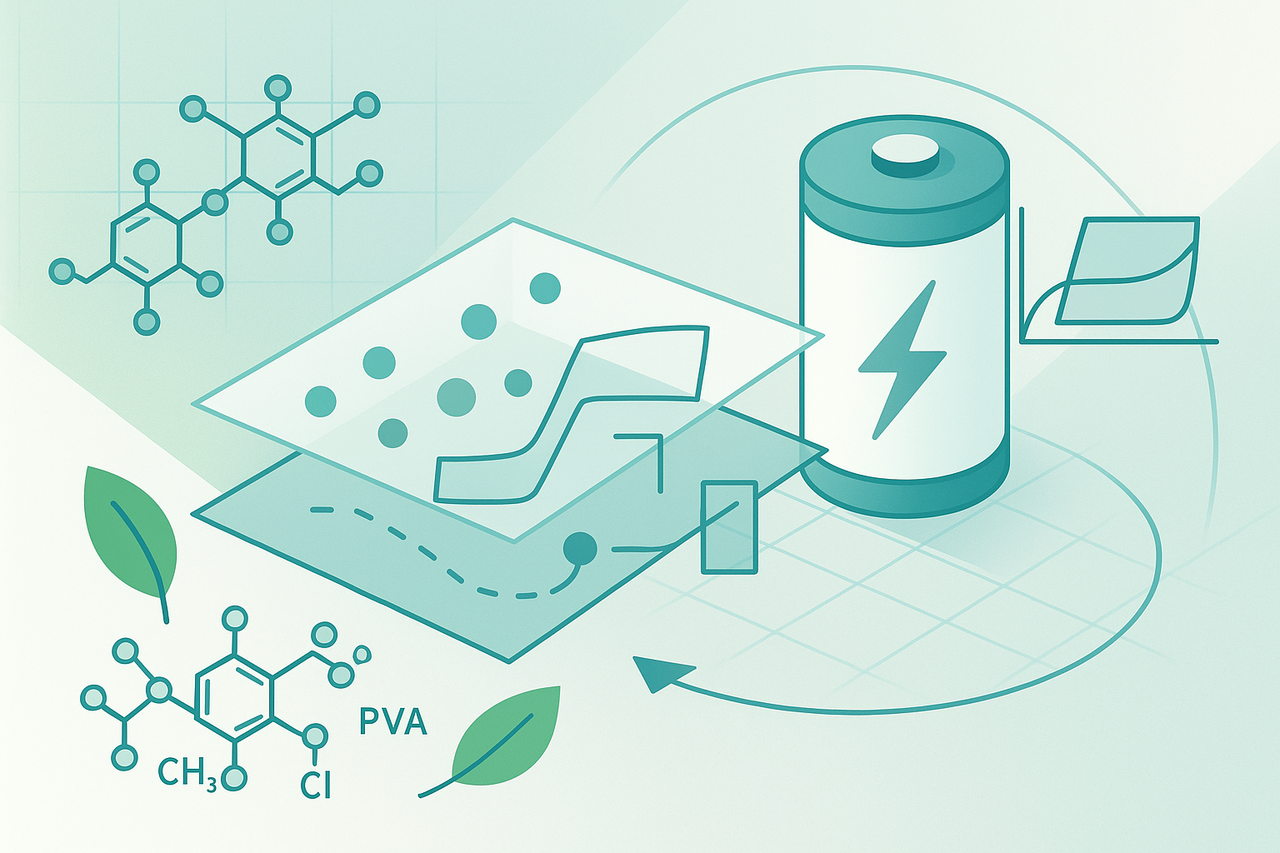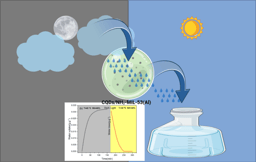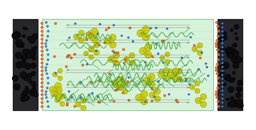EDLC supercapacitor with enhanced charge–discharge cycles designed from plasticized biopolymer blend electrolytes: Biomaterials will be the future of energy storage devices
Published in Materials

Electrochemical double-layer capacitors (EDLCs) promise rapid charge–discharge and long cycle life but still chase battery-level energy density. This paper presents a biopolymer blend electrolyte (PVA:CS:NaSCN) plasticized with glycerol (9–45 wt%), delivering high ionic transference, broad stability window, and robust EDLC cycling. Through FTIR, impedance, dielectric, and electrochemical analyses, the study links molecular interactions and dielectric enhancement to device-level gains in capacitance, energy, and power over 5000 cycles.
Highlights of our study
-
Green, plasticized electrolyte architecture. A CS–PVA host doped with NaSCN and plasticized by glycerol shows strong H-bond interactions (FTIR shift of the SCN band near ~2039 cm⁻¹) and reduced bulk resistance, enabling higher ion mobility.
-
Conductivity & dielectric upgrade. DC conductivity rises to 2.24 × 10⁻⁴ S·cm⁻¹ with glycerol, while ε′ > ε″ across frequencies indicates charge-storage dominance; tan δ peaks shift to higher frequency, evidencing improved ion transport.
-
Electrochemical metrics that matter. Transference number t₍ion₎ = 0.947 and breakdown voltage = 2.73 V support EDLC operation in a wide window with ion-dominant conduction.
-
Device performance over 5000 cycles. Nearly rectangular CVs and triangular GCDs confirm non-Faradaic storage; average ESR ≤ 38 Ω, specific capacitance 93.34 F·g⁻¹, efficiency 98.9 %, energy density 12.96 Wh·kg⁻¹, and power density 2054.05 W·kg⁻¹ demonstrate durable high performance.
-
Positioning on the Ragone map. The assembled EDLC tracks toward battery regions while retaining supercapacitor-class power, underscoring the promise of biopolymer electrolytes for next-gen, safer energy storage.
Why it matters
Biopolymer-based electrolytes advance safety, sustainability, and manufacturability. By tuning dielectric environment and segmental dynamics with a green plasticizer, this work shows a practical route to close the energy gap without sacrificing power or longevity—key for EV auxiliary systems, wearables, and grid services.
Authors & Affiliations
Shujahadeen B. Aziz*, Peshawa O. Hama, Dara M. Aziz, Niyaz M. Sadiq, Haw J. Woo, Mohd F. Z. Kadir, Rebar T. Abdulwahid, Bandar A. Al-Asbahi, Abdullah A. A. Ahmed, Jamal Hassan* — Research and Development Centre, University of Sulaimani (Iraq); Technical College of Engineering, Sulaimani Polytechnic University (Iraq); University of Raparin (Iraq); Universiti Malaya (Malaysia); King Saud University (Saudi Arabia); University of Hamburg (Germany); Khalifa University (UAE). (Corresponding authors: shujahadeenaziz@gmail.com; jamal.hassan@ku.ac.ae).
Keywords: biopolymer electrolytes; glycerol plasticizer; chitosan–PVA blends; NaSCN; EDLC; dielectric engineering; high-cycle stability



Please sign in or register for FREE
If you are a registered user on Research Communities by Springer Nature, please sign in